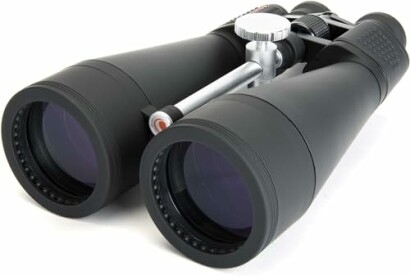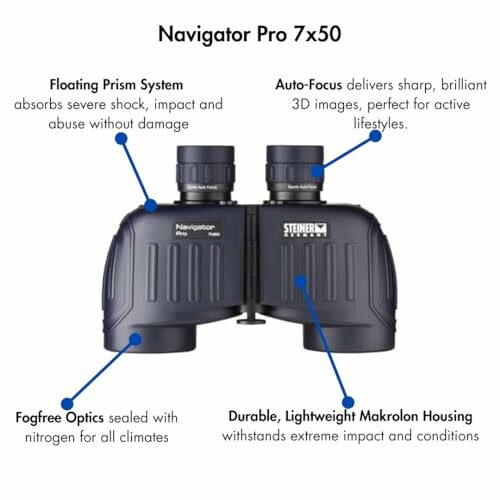
The Role of Binoculars in Planet Viewing
Key Takeaways
- Binoculars are a great supplement to telescopes for viewing planets.
- Magnification, objective lens diameter, and optical quality are essential factors when choosing binoculars.
- Features like water-resistance and durability enhance the viewing experience outdoors.
- Popular models include the [Celestron SkyMaster 20X80 Binocular](https://www.telescopetoseeplanets.com/products/astronomy-binoculars/celestron-skymaster-20x80-binocular-review-unbeatable-astronomy-and-outdoor-viewing) and [Steiner Navigator Pro 7x50 Binoculars](https://www.telescopetoseeplanets.com/products/astronomy-binoculars/steiner-navigator-pro-7x50-binoculars-review-unbeatable-marine-binoculars).
When it comes to astronomy, telescopes often steal the spotlight. However, binoculars have a significant role to play, particularly for casual observers and those looking to complement their telescope use. This article explores how binoculars can enhance planet viewing and how to choose the right pair.
Why Use Binoculars for Planet Viewing?
Binoculars offer a portable and user-friendly way to enjoy the night sky. They provide a wider field of view compared to most telescopes and can be more intuitive for beginners. Additionally, binoculars can be used for both terrestrial and celestial viewing, making them versatile instruments.
Benefits of Binoculars for Astronomy
- Ease of Use: No complicated setup required.
- Portability: Lightweight and easy to carry for outdoor observations.
- Cost-Effective: Generally more affordable than high-quality telescopes.
- Wider Field of View: Allows for easier tracking of celestial objects.
Key Features to Look For
When selecting binoculars for planet viewing, consider the following features:
| Feature | Description |
|---|---|
| Magnification | The power of magnification is essential. Higher magnification enables detailed observations of planets. |
| Objective Lens Diameter | A larger objective lens allows more light in, resulting in brighter images, which is crucial for astronomy at night. |
| Optical Coatings | Multi-coated optics improve light transmission, leading to clearer views. |
| Water-Resistance | Helps protect your binoculars from the elements, especially in unexpected weather conditions. |
| Weight | Lightweight models are easier to hold steady during long observation sessions. |
Popular Binocular Models for Planet Viewing
Here are two outstanding binoculars for viewing planets:
Celestron – SkyMaster 20X80 Binocular
Ideal for long-distance viewing with massive 80mm lenses and powerful 20x magnification. Experience unbeatable astronomical observing capabilities.
Learn MoreThe Celestron SkyMaster is particularly favored for its bright and crisp images, thanks to its BaK-4 prisms and large objective lenses. It is also water-resistant, making it a reliable option for outdoor use.
Steiner Navigator Pro 7x50 Binoculars
Offers high contrast optics and a lightweight design with a floating prism system, making it ideal for various environments.
Learn MoreWith a Sports-Auto Focus and durable construction, the Steiner Navigator Pro ensures sharp images from short to long distances, making it an excellent choice for both marine and astronomical viewing.
How to Use Binoculars for Planet Viewing
- Stabilize Your View: Use a tripod adapter for steady views of celestial bodies.
- Find the Right Location: Choose a dark area away from city lights for optimal viewing conditions.
- Adjust Magnification: Start at a lower magnification to locate the planet and then zoom in for detailed observation.
- Allow Time for Acclimatization: Give your eyes time to adjust to the dark for the best viewing experience.
- Check Weather Conditions: Clear skies are essential for observing planets; cloudy nights may hinder visibility.
Conclusion
Binoculars can be a fantastic tool for both seasoned astronomers and newcomers looking to explore the night sky. Their lightweight and user-friendly nature make them an ideal companion for casual planet viewing alongside telescopes. By selecting the right pair with the essential features, you can significantly enhance your celestial experiences.
For more information on different types of telescopes, check our guide on choosing planetary telescopes, or learn more about buying guides for astronomy gear.
Pros
- Portable and easy to use
- Affordable option for beginners
- Versatile for terrestrial and celestial observing
- Wide field of view
Cons
- Less detailed than telescopes
- Can be difficult to hold steady for extended periods
Further Reading
Explore additional topics related to planet viewing:

